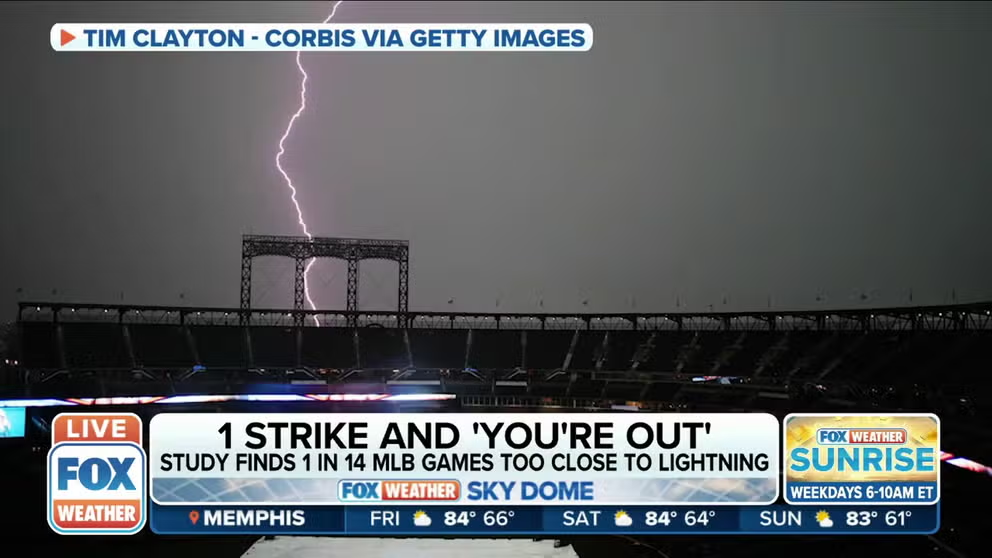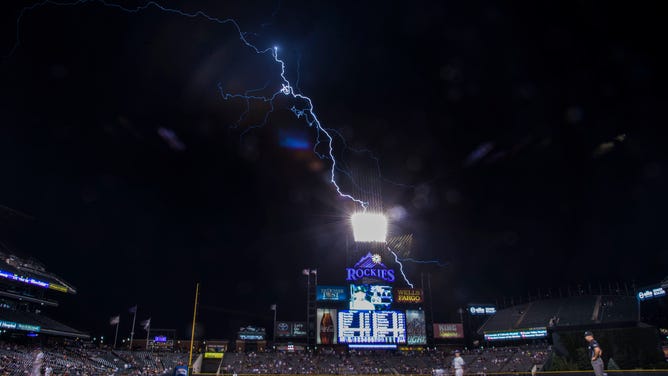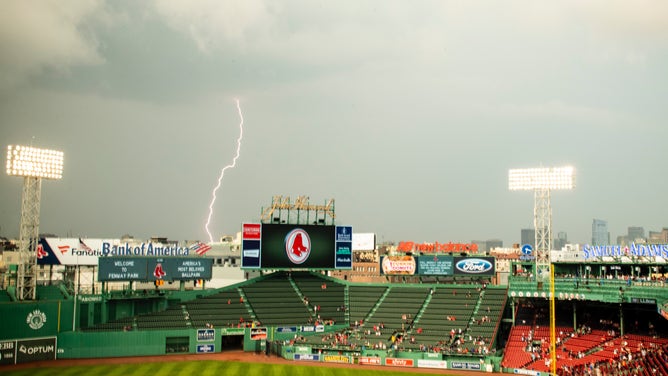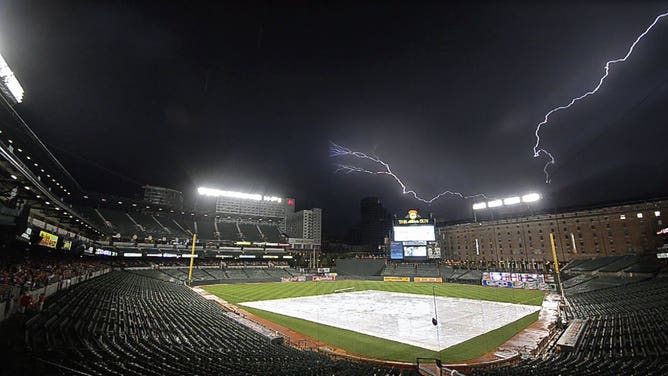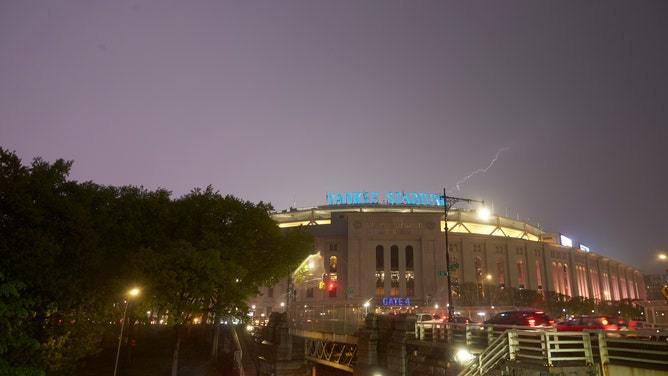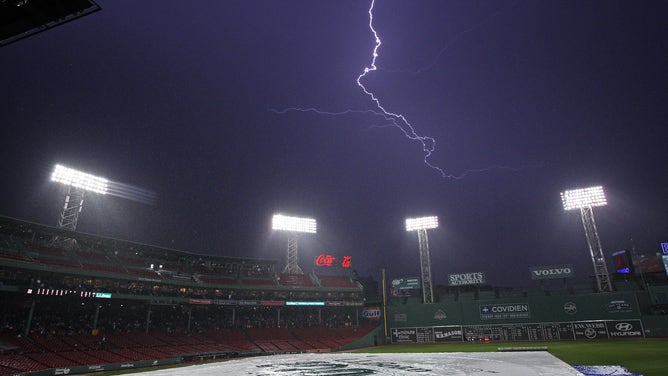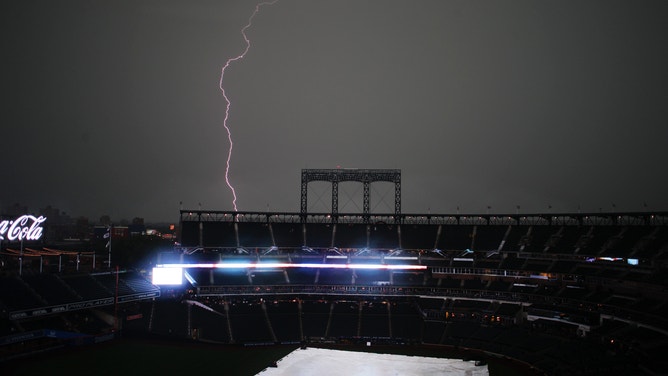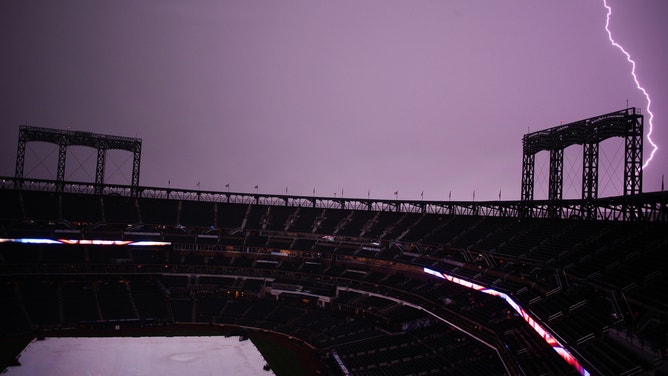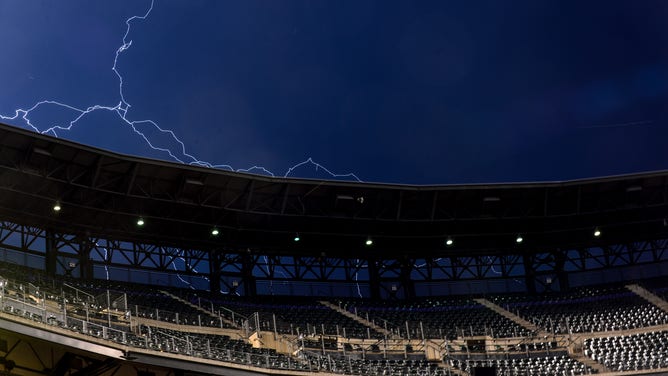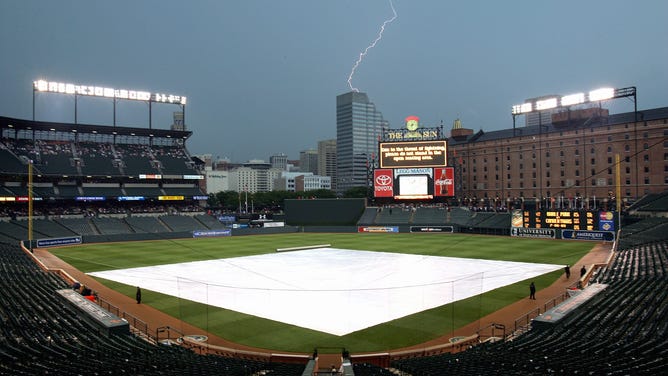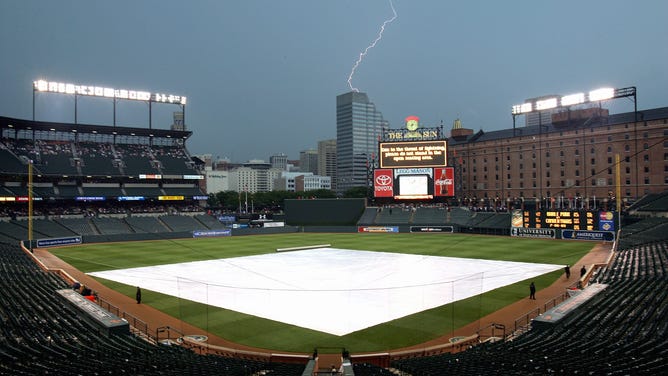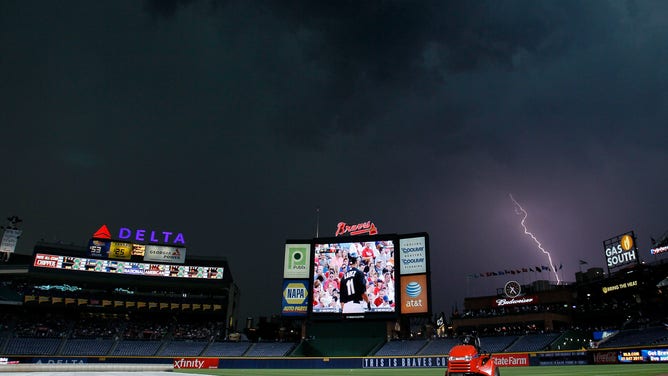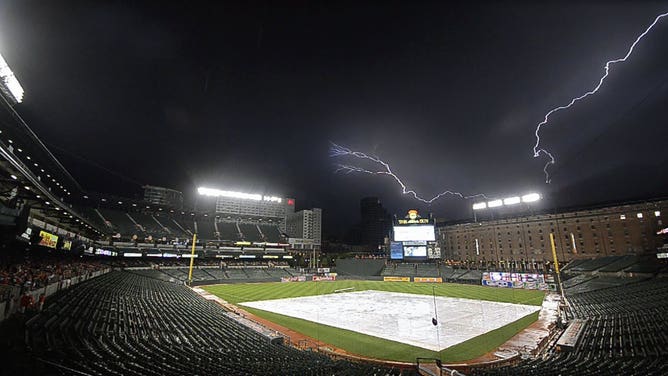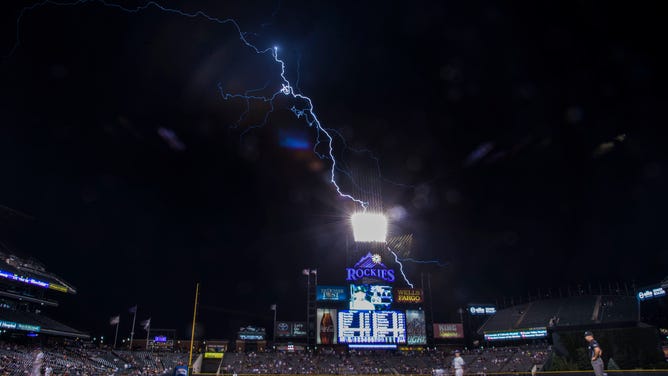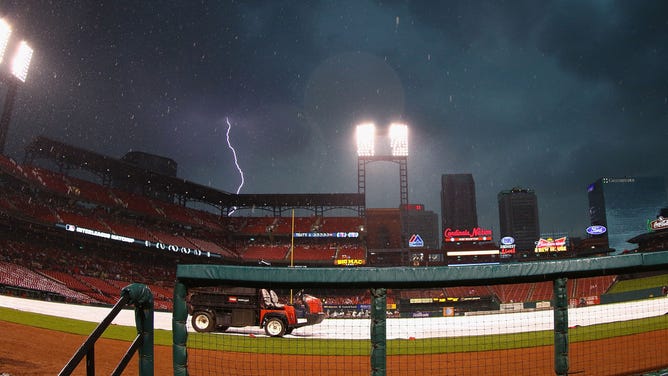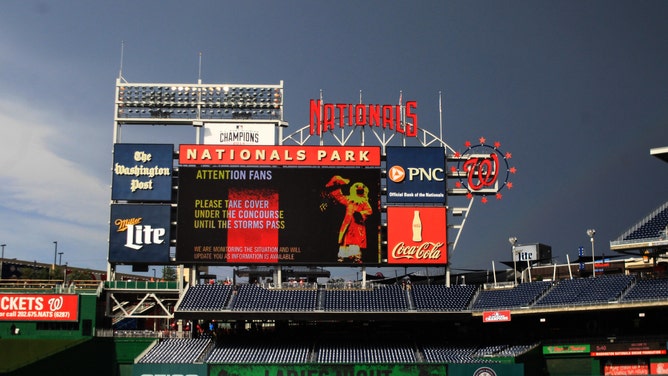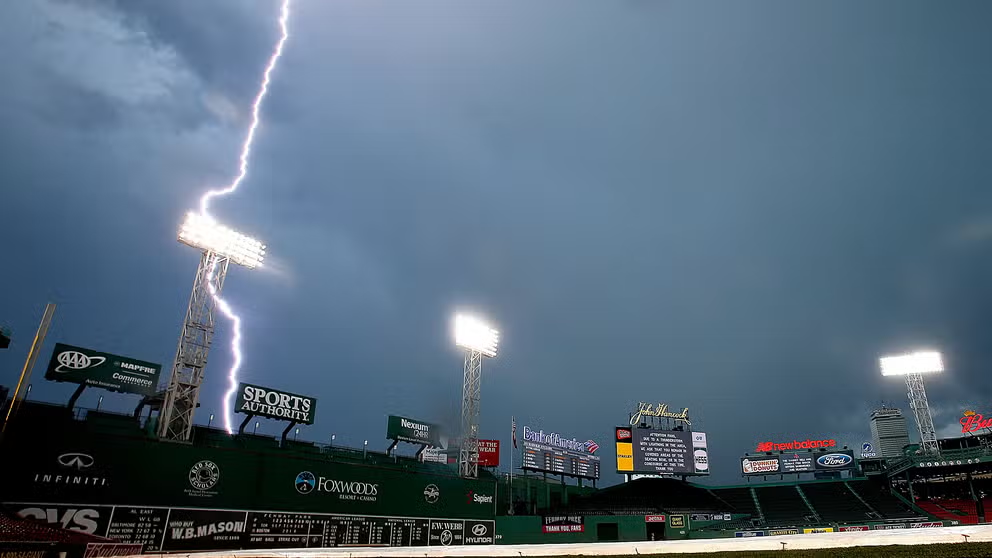1 strike, 'you're out': Study finds dangerous lightning close by in 1 of every 14 MLB games
Lightning strikes occurred dangerously close to 27 of Major League Baseball's 30 stadiums from the 2016 through 2019 MLB seasons
Study finds lightning is dangerously close by in 1 of every 14 MLB games
A new study by lightning expert Chris Vagasky with Vaisala finds that nearly one out of every 14 Major League Baseball games features lightning strikes that safety experts would consider occurring at an unsafe distance.
LOUISVILLE, Colo. – The baseball adage is that it's "three strikes, you're out," but it would only take one strike of lightning to take someone out at the ol' ball game.
And with baseball's season coinciding with the peak summer season for thunderstorms, lightning is a frequent and unwanted visitor at stadiums around much of the United States.
A new study by lightning expert Chris Vagasky with Vaisala finds that nearly one out of every 14 Major League Baseball games features lightning strikes that safety experts would consider occurring at an unsafe distance.
"I've watched numerous baseball games on TV and seen lightning during the broadcast; lots of meteorologists have," Vagasky told FOX Weather. "We know that lightning is a threat to people outside, so it’s always a bit disconcerting to see thousands of people in the stands when lightning appears to be close by."
IF YOU SEE IT, FLEE IT': LIGHTNING STRIKE SURVIVOR NOW PREACHES SAFETY TO OTHERS
Top 7 MLB Ballparks for Lightning Frequency
Research shows about 1 out of every 14 MLB games features thunderstorms within 8 miles of the stadium. Here are the top open-air stadiums for lightning frequency.
And while there have been few, if any, reports of lightning-related injuries at a ballpark in recent years, lightning kills about 30 people in the U.S. each year, according to Vagasky.
Highlighting this danger, Vagasky pored over data from the National Lightning Detection Network to determine which ballparks receive the most frequent lightning in the area and how often lightning occurs.
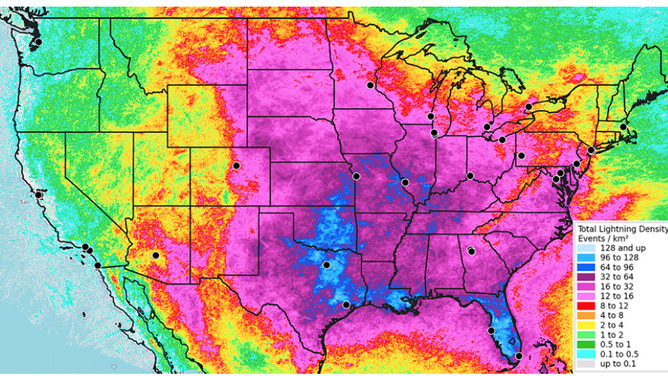
Map showing locations of MLB stadiums (black dots) overlaid on the National Lightning Detection Network average total lightning density from 2015 to 2019.
(Chris Vagasky / Vaisala)
"Lightning can strike 10 to 15 miles away from the core of a storm. So once lightning is within that distance, it’s too close," he said. "In this paper, I looked at 8 miles, because that is the 'default' distance at which a delay should be initiated, according to the NWS Lightning Safety Toolkit."
He found that lightning strikes occurred dangerously close to 27 of Major League Baseball's 30 stadiums from the 2016 through 2019 MLB seasons. Houston, Miami, Tampa and St. Louis led the way with the most games that experienced lightning, with the Baltimore-Washington area not too far behind. Only the stadiums along the West Coast – where thunderstorms are rare – showed few, if any, lightning issues.
Vagasky used a July 23, 2020, game in Washington between the Nationals and the New York Yankees, when a strong thunderstorm approached the capital, as an example of when lightning dangers should have been more carefully considered.
The umpire called for a rain delay when heavy rain reached the stadium, but by then, Vagasky noted there had been nearly 3,000 lightning strikes detected within an 8-mile radius of Nationals Park. Strikes hit as close as a just over a mile from the stadium before the game was delayed.
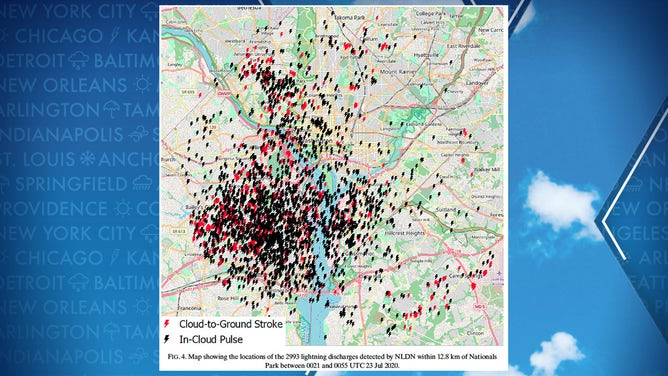
Map showing the locations of the 2,993 lightning discharges detected by the National Lightning Detection Network within 8 miles of Nationals Park in 34 minutes on July 23, 2020.
(Chris Vagasky / Vaisala)
"Although the overall probability of lightning striking a particular point is low, exposure to lightning in a large outdoor venue creates a potential hazard for players, crew, and spectators," Vagasky wrote.
WHAT HAPPENS WHEN SOMEONE IS STRUCK BY LIGHTNING?
Let's go, Mets – the meteorologists, that is…
Major League Baseball does not have a set criterion for lightning, like the NCAA or high school leagues do. Before the game begins, home teams are in charge of deciding whether a game should proceed. But once the home team manager hands his lineup card to the home plate umpire before the first pitch, it becomes the umpire's call when to delay the game for weather or field conditions.
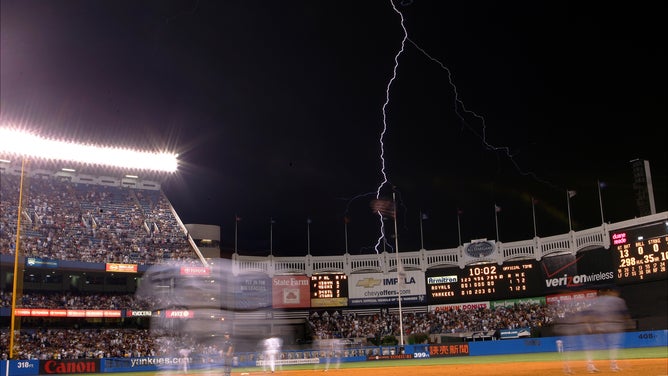
UNITED STATES - AUGUST 03: A lightning bolt lands behind Yankee Stadium in the 9th inning of the Yankees game against the Kansas City Royals at Yankee Stadium. (Photo by Ron Antonelli/NY Daily News Archive via Getty Images)
But there can be a few exceptions.
"The MLB rulebook now has rules 4.03(e) and 4.04(a) that state a club can 'suspend or resume any game pursuant to a policy governing severe weather, significant weather threats and lightning safety that has been filed with the league office prior to the championship season,'" Vagasky said.
IN A FLASH: LIGHTNING CHASER SHARES HOW TO CAPTURE NATURE'S FURY ON CAMERA
An MLB spokesperson told FOX Weather that "a relatively small number of clubs have filed what their thresholds are for stopping and resuming a game. It is not mandatory to do so."
But most, if not all, clubs do consult with meteorologists or weather companies for game-day weather information and forecasts. The Minnesota Twins have even hired an on-staff meteorologist to be at all home games.
"Our office is located behind the third base dugout with a short walkway to home plate," says Mace Michaels, the Twins' game-day meteorologist. "The Head Groundskeeper is here at all times (or in the camera well) and team operations officials are here during times of rain or thunderstorms."
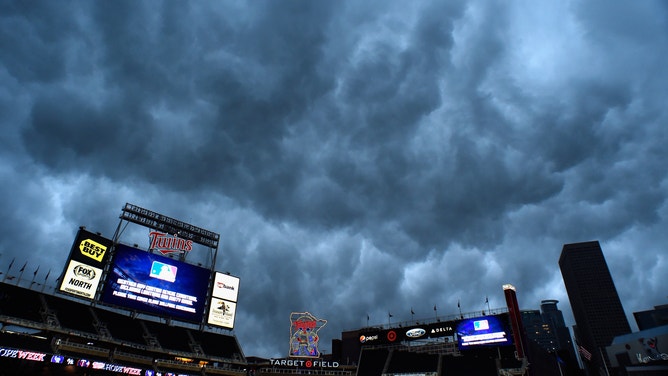
MINNEAPOLIS, MN - MAY 17: Storm clouds loom as the start of the game between the Minnesota Twins and the Colorado Rockies is delayed due to rain on May 17, 2017 at Target Field in Minneapolis, Minnesota. (Photo by Hannah Foslien/Getty Images)
Michaels says that although umpires decide on when to stop the game, "We are constantly letting them know where storms are located and time of arrival. When lightning is within 10 miles of Target Field, we post it on the big screen to let everyone know that thunderstorms are in the vicinity and should head to shelter."
Lightning safety's 30-30 club
FOX Weather asked Vagasky that, as a lightning safety expert, if he were in charge, what would he do?
"I think that teams should work with lightning safety specialists and meteorologists to determine how long it takes people to get to safety – for instance, onto the concourse away from any overhangs, and use that time as the threshold (to begin safety measures)," he said. "So, if it takes 30 minutes to get people to safety, start putting your plan into action when a storm is 30 minutes out. There will be times when a storm pops up nearby and you don’t have the time you thought you would. Put your plan into action immediately; you just want to get people to a safe place when lightning is nearby."
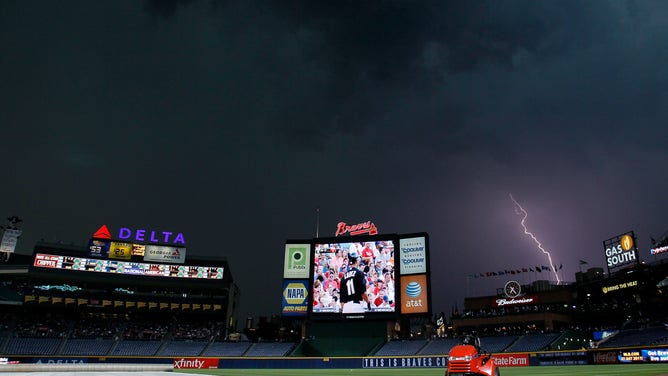
ATLANTA, GA - JUNE 15: Lightning strikes in the distance during a weather delay before the game between the Atlanta Braves and the New York Mets at Turner Field on June 15, 2011 in Atlanta, Georgia. (Photo by Kevin C. Cox/Getty Images)
And where is that safe place?
"Get out of the bleachers and get on to the concourse level," he says. "Get under a covered area – don't be right up against the edge of the overhang because lighting can jump from the overhang into you. Get closer to where the concession stands are. If it's real bad, get into one of the bathrooms – it's fully enclosed and will be giving you a lot of protection."
And he suggests making sure the storm is truly far enough away before resuming play.
"Traditionally, the 30-30 rule (get inside when you hear thunder within 30 seconds of lightning, and stay inside until 30 minutes after the last thunder) has been used as a method to suggest it’s safe to be outside again," he said. "But an on-site meteorologist can use lightning detection and radar information to start play sooner if lightning has moved out of the area."
Even covered stadiums present risk
Three of the top four stadiums to see the most lightning – Houston, Miami and Tampa – all play in covered stadiums. But while going to a game in a covered stadium provides protection for fans inside, it's still dangerous when storms hit before or after games.
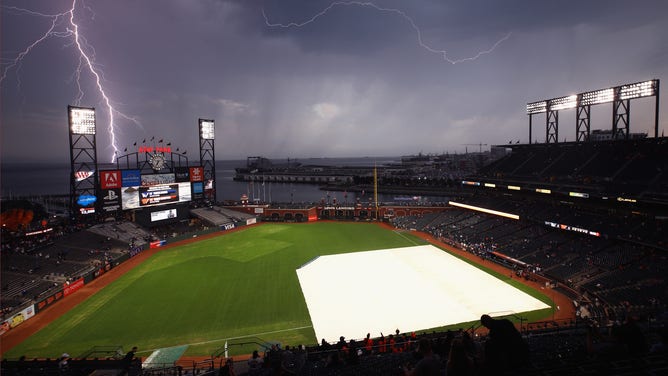
SAN FRANCISCO, CA - SEPTEMBER 11: Lightning strikes near AT&T Park before the San Francisco Giants game against the Los Angeles Dodgers on September 11, 2017 in San Francisco, California. (Photo by Ezra Shaw/Getty Images)
"Fans arriving or leaving the game, parking attendants, sidewalk vendors, other crew/staff … We saw just a few weeks ago that a father and daughter were struck and injured by lightning after leaving a Yankees spring training game that was canceled because of thunderstorms in the area," Vagasky said. "This is another challenge for lightning safety around the ballpark. It can take up to 15 minutes in some cases to get back to your car, and you don’t want to be outside walking in a storm."
FATHER, DAUGHTER SPEAK OUT AFTER SURVIVING LIGHTNING STRIKE AT SPRING TRAINING IN FLORIDA
He suggests staying in your car or, if not available, in a public building such as a restaurant or shop if lightning is happening before the game or remaining in a protected area of the stadium if storms persist after the game ends or is called.
Lightning is a danger no matter the size of the field
But you don't have to be Mike Trout or Aaron Judge to face dangers on the diamond during thunderstorms. Any outdoor games should cease when lightning approaches. As they say, "When thunder roars, go indoors."
"The best advice to be given is 'there is no place outside that is safe during a thunderstorm,'" Vagasky says. "If you are at any sporting event at the local fields or high school, be aware of your surroundings and when lightning approaches, get into a lightning safe place, like a metal-topped vehicle or substantial building like a school. Convertibles, golf carts, dugouts, picnic pavilions and outbuildings are not lightning safe."
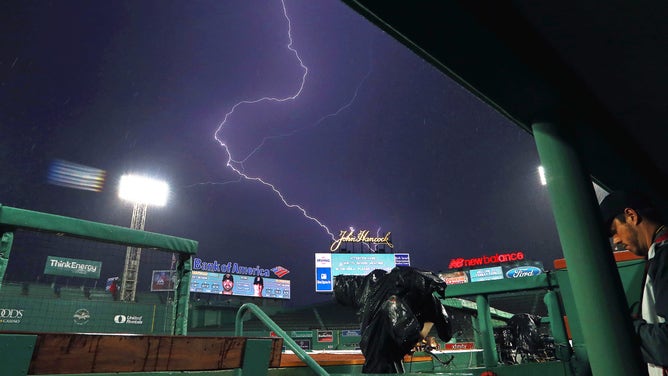
BOSTON - JUNE 27: A lightning bolt is seen over the bleachers during a rain delay. The Boston Red Sox host the Minnesota Twins in a regular season MLB baseball game at Fenway Park in Boston on Jun. 27, 2017. (Photo by Jim Davis/The Boston Globe via Getty Images)
He says all outdoor event organizers should have a lightning safety plan in place.
"The NWS StormReady Program, the NWS Lightning Safety Toolkit and the National Athletics Trainers Association Lightning Safety Position Statement are all resources that can be used and adapted … to improve lightning safety at the ballpark," he said.
Vagasky also warned against relying on lightning "prevention" or lightning "suppression" devices that some MLB teams have installed at their ballpark.
"These do not work to prevent or suppress lightning at the stadium and can provide a false sense of security," Vagasky said. "The only way to ensure lightning safety is to get people inside when a thunderstorm is nearby."
